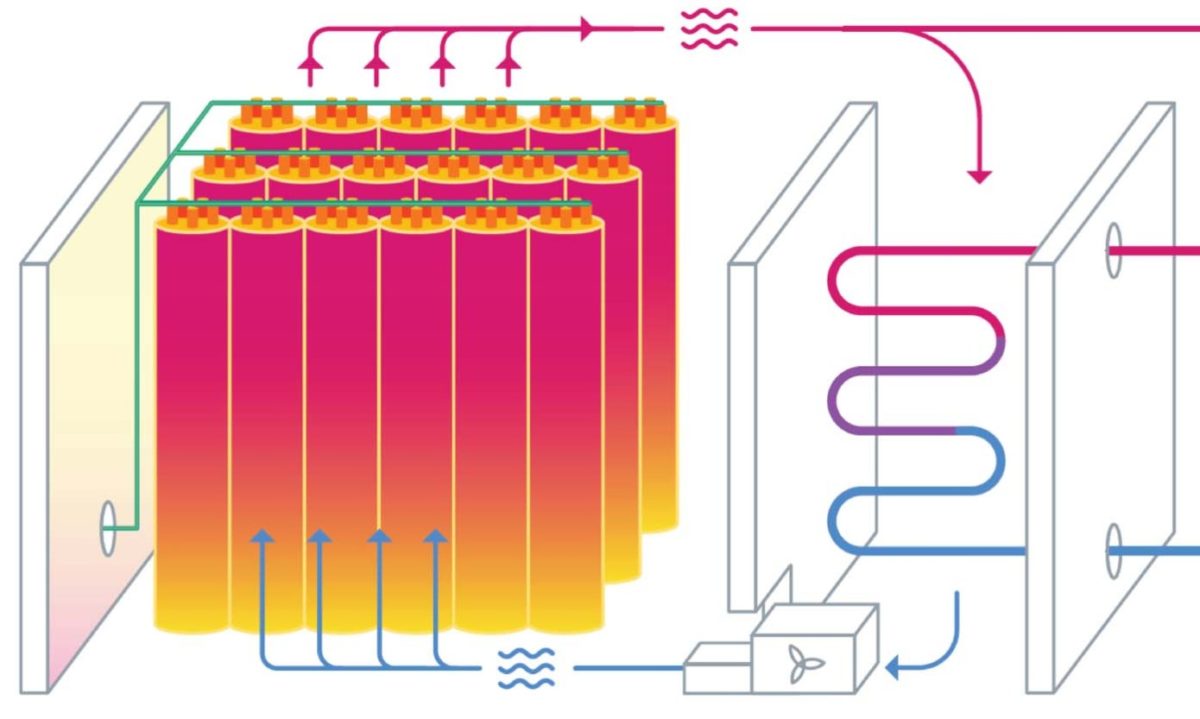From pv magazine USA
US start-up Rondo Energy announced the closing of a $22 million Series A funding round to support its technology, a renewable energy heat battery aimed at reducing the carbon impact of industrial processes. The funding round was led by Breakthrough Energy Ventures and Energy Impact Partners.
It is estimated about one third of global emissions can be attributed to heavy industry. And about 40% of that, or 10% of global emissions, comes from high-temperature industrial products like cement and steel.
The Rondo heat battery offers a zero emissions source of industrial heat, storing solar and wind energy at temperatures over 1200°C. The company said it plans to begin manufacturing and delivering systems to customers later this year.
“We believe the Rondo Heat Battery will prove critical to closing stubborn emissions gaps,” said Carmichael Roberts, Breakthrough Energy Ventures. “The cost of renewable energy has been steadily falling, but it hasn’t been an option for industries that require high temperature process heat since there was no way to efficiently convert renewable electricity to high temperature thermal energy. Rondo enables companies in industries such as cement, fuels, food and water desalination to reduce their emissions while also leveraging the falling costs of renewables.”
Popular content
The system is designed to pull energy from solar, wind, and the energy grid, charging the battery intermittently, but delivering continuous heat. Rondo said the battery bricks are made of safe, widely available materials.
The company claims the heat battery stores energy with 98% efficiency, something that Peter Saundry, physicist and environmental technology professor at John Hopkins University, said was “way too optimistic.” Saunders said if the company can achieve efficiencies around 85-90%, then in his view the company has a “really good technology.”
High-heat industrial processes need decarbonization alongside other sectors. This process of converting intermittent zero-carbon energy into continuous high heat or energy is an example of “indirect electrification.” Another example would be the production of green hydrogen, like the fuel produced in a partnership between Heliogen, a concentrated solar power facility maker, and Bloom Energy, a hydrogen electrolyzer.
This content is protected by copyright and may not be reused. If you want to cooperate with us and would like to reuse some of our content, please contact: editors@pv-magazine.com.



By submitting this form you agree to pv magazine using your data for the purposes of publishing your comment.
Your personal data will only be disclosed or otherwise transmitted to third parties for the purposes of spam filtering or if this is necessary for technical maintenance of the website. Any other transfer to third parties will not take place unless this is justified on the basis of applicable data protection regulations or if pv magazine is legally obliged to do so.
You may revoke this consent at any time with effect for the future, in which case your personal data will be deleted immediately. Otherwise, your data will be deleted if pv magazine has processed your request or the purpose of data storage is fulfilled.
Further information on data privacy can be found in our Data Protection Policy.